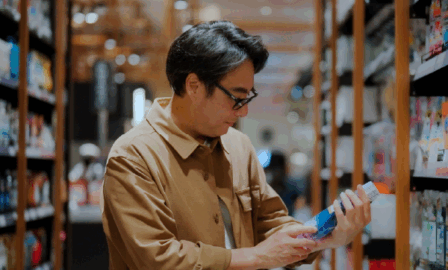Competition continues to be fearless within the retail and CPG industries. When surveying the landscape of retail and consumer goods companies it’s apparent we continue to be in an increasingly competitive environment where brands scratch and claw for any advantage they can find. Some companies are looking for incremental organic improvements, while others are betting on acquisitions as means to grow and stay relevant; but there is a sense that true innovation is the magic formula that can lead brands to the top of the mountain. But, with incremental innovation, the risk of brand dilution is always a concern.
The innovation landscape
We are seeing more companies focus on breakthrough innovation across all areas of the business to help create a competitive differentiation– what products are being offered, what services are being provided, how products are sold, how experiences are being created – however, the question remains…what happens when innovation isn’t enough? Product lifecycles are shorter than ever, so developing an innovative product, service, platform or go to market gives a smaller edge than ever before or at least one that is shorter-lived. Additionally, barriers to entry in the services market are lower than ever, so will a new service really make a long-term difference? As retail evolves and new channels develop, being first to market doesn’t provide the same boost as it once did.
Impact of misaligned innovation to your brand
When the innovation well dries up as a means for growth, companies tend to go back to the basics: how can the organization expand its reach to increase top-line revenue? We see this everywhere in the market today – new partnerships and joint ventures arising, a focus on omnichannel distribution, and endless amounts of promotions and discounts – a relentless focus on incremental discrete strategic moves. The constant pressures of the market today, as well as a lack of focus on strategic long-term sustainable growth, leads newcomers and prominent companies alike down a path where they risk their most valuable asset: the brand. Brand dilution, value proposition paranoia, and long-term strategy misalignment are all devastating symptoms of companies plagued with mindless incremental innovation.
The result…brand dilution
Brand damage is often obvious. A front-page headline about a data breach or a product recall can lead to irreparable harm to a brand. Brand dilution, however, is subtler, and can very likely be unintentional but a result of a convoluted strategy or lack thereof. Brands strive to have their identity elicit an emotional response from their customers and the public at large. If, when facing the challenge of how to innovate, the choices organizations face do not match that same response, organizations are staring brand dilution in the face. This is especially vital when evaluating partnerships with other companies, as one key will be to ensure that the two brands share a common vision and can mesh together. Luxury brands should be wary about putting their products in stores that don’t carry the same clout as they do, else they may risk a failure like Neiman Marcus did in partnering with Target years ago.
Answer this: What is your value proposition? And is it known?
We live in a world so competitive that if there is even a question about what a company’s value proposition is, they are bound to fail. You can compete on quality, price, convenience, service, etc. but you must compete on SOMETHING. As Michael Treacy and Fred Wiersema said in “The Discipline of Market Leaders” – the best companies have to pick a value proposition to compete on, and exert a true focus in excelling at it – whether that be customer intimacy, product innovation, or operational excellence. Retailers and consumer goods companies that are stuck in the middle are the ones struggling to stay afloat, condemned to be deemed irrelevant. One of the most beleaguered retailers, Sears, just recently announced a partnership with Amazon to install tires that were purchased on their website. While this gave a nice bump to the stock price, it does nothing to help a company who desperately needs to reinvigorate their value proposition as a first step to save the brand.
And is your organization aligned with that strategy?
Organizational alignment on a long-term strategy is one of those things that should go without saying when discussing the financial health and sustainable growth prospects of a company. The reality is that more often than should be the case, this strategy is not set, and if it is, it is not committed to by all aspects of the organization with discipline and rigor. There are cases where innovating away from the current value proposition makes sense, if the long-term strategy is a shift away from the current model, which may very well be the case for a struggling company looking to shake things up. Successful brands will know where they are going, and will seek to innovate in ways which help them get there in new, powerful, and sustainable ways.
How can you ensure your innovation engine is running in the right direction?
Our view of strategic innovation is just that, it must be strategic. As important, the right framework ensures that the business challenge is identified properly, alignment exists within the organization and that any potential solutions match the brand image and the long-term goals and values of the organization.
Co-author and contributions by Sebastian Valencia



